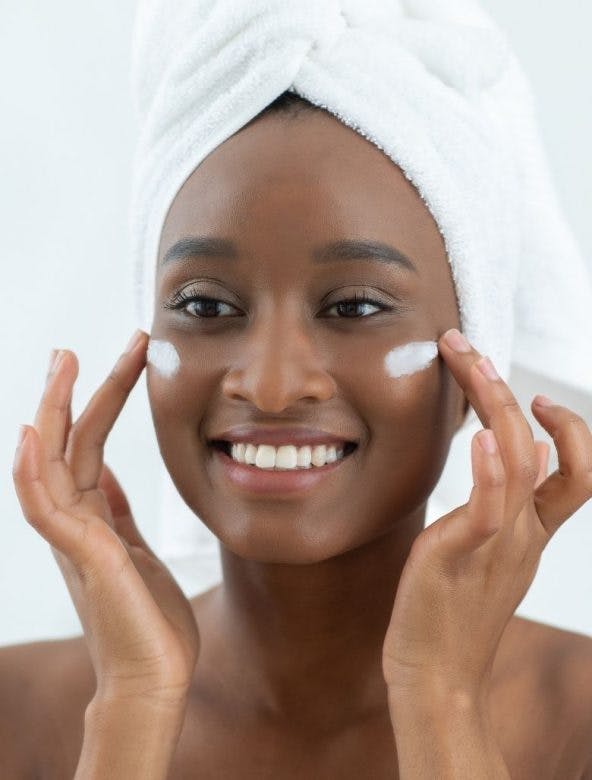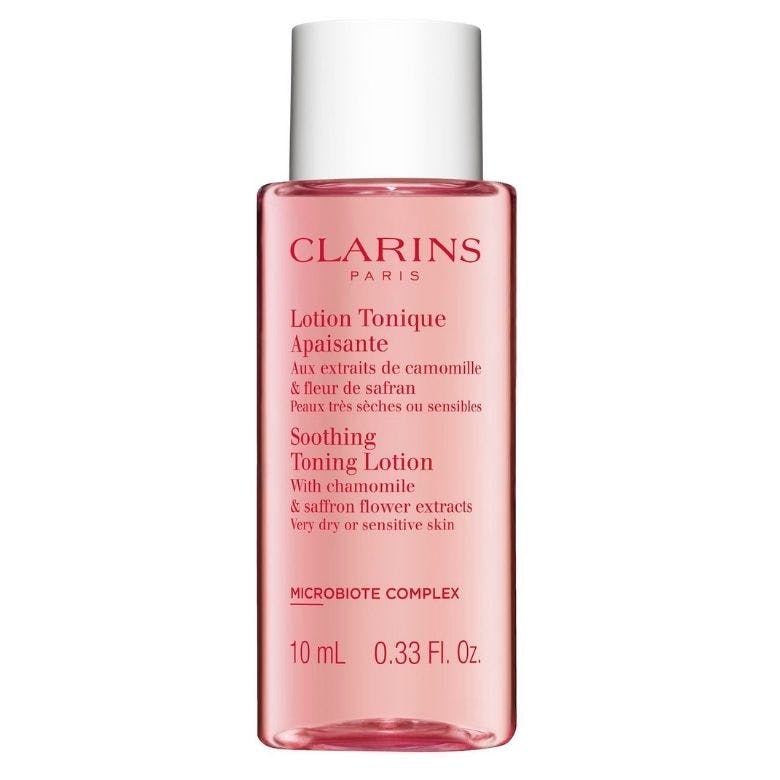Everything You Need To Know About Your Skin’s pH Level
6 minutes read
Studies have shown that getting to grips with your skin pH level can have a multitude of benefits for your skin health. But if the sum of your knowledge on the scientific scale is the faded memory of chemistry classes taken long ago, don’t fret. Let’s pick up our pencils – this skin class is in session.
The Normal pH Level of the Skin:
Let’s start at the very beginning: the pH scale ranges from 0-14, with 0 being the most acidic, 7 being neutral and 14 being the most alkaline. “Your skin is naturally slightly acidic,” explains Charlotte McHale, Clarins Training Manager. “Skin is naturally around pH 5.5, but it varies slightly from person to person. As a result, that means that skin is slightly more acidic than water.” The reason for this? Your acid mantle: a very fine film on the skin’s surface that acts as a vital part of your skin’s barrier function. And it serves precisely that purpose – a barrier, protecting your delicate skin from external bacteria and keeping in precious natural oils that maintain moisture levels.
First investigated back in 1928 by two German physicians, they discovered the protective mechanism that having this slightly acidic layer offers. When skin is at its optimum pH, the acid mantle can function at its best and moisture in the skin is balanced.
Studies have shown that exact pH levels vary slightly from person to person and skin type to skin type. “Oilier skins tend to be slightly more acidic, but not to a problematic degree,” McHale explains. “Actually, pH tends to be more of a problem in the other direction, with dehydrated or very dry skin that lacks oil.” Variations can also be seen in different areas of skin. For example, skin that doesn’t see the light of day very much will maintain its acidity more readily than those parts of your body that are regularly exposed – eg. your hands and face. These areas tend to be a touch more alkaline. And in fact, studies have shown that skin with a pH value of below 5.0 is actually in slightly better condition than skin that measures above 5.0, with knock-on effects for your barrier function and moisture levels.
How pH Affects the Skin:
When the pH level of your skin fluctuates, it can result in a whole host of unpleasant issues. So, what can cause this? For many of us, an important step in our skincare regime is an active acid, or AHA, to chemically exfoliate the complexion. But they can strip skin too harshly, resulting in irritation.
On the other end of the spectrum, using products that are too alkaline can cause dryness in your naturally slightly acidic skin. Studies have shown that skin with a more alkaline pH (reading higher on the pH scale) saw the faster development of fine lines and wrinkles. And it’s not just the contents of your bathroom cabinet that are the culprits; studies have also revealed that even plain tap water (and its temperature) can have a profound effect on skin surface pH. Other factors include changes in humidity, air pollution, sweat and sun exposure.
So how can you monitor your skin’s pH? You can easily check your own pH levels using at home test strips, or if you’d feel more comfortable in the hands of a professional, take a trip to your dermatologist, who will be able to help. But also, take a good hard look in the mirror. Many of us will be familiar with that tight and uncomfortable sensation that can sometimes occur post-cleansing.
McHale explains, “after you’ve washed your face when you’ve been using water, you get that tight feeling of the skin. That’s the feeling that most people with dehydrated skin will feel much of the time because of the combination of a disrupted pH level and dry skin. The sensation is telling them that their oil/water balance is off.”
Essentially, your skin will let you know if its pH level has been compromised.

Signs of Unbalanced Skin pH
So, what are the tell-tale signs of an unbalanced pH level? Many of us will have experienced some of the following at some point:
- Redness
- Tightness
- Sensitivity
- Irritation
- Dry and flaky skin
- Acne and breakouts
- Premature Ageing
- Eczema
Read next: 8 Skincare Myths To Avoid, According To Experts
How to Balance Your Skin pH Level
Put this newfound knowledge to good use, and while shopping for your skincare, be sure to look for products that will keep your skin pH level as balanced as possible. A gentle cleanser is essential, but it’s not quite as simple as picking out a product that mimics the pH level in your skin. Studies have shown that just because a cleanser boasts a pH level similar to your skin, doesn’t guarantee that it’s a milder product. It’s also important that the cleanser has been formulated so its ingredients interact well together and most importantly, on your skin.
Reach for Gentle Foaming Cleansers, which are pH balanced, “but the water that’s coming out of your tap isn’t,” adds McHale. As a result, “your immediate pH is disrupted. The application of a toner straight away will help balance it back to pH 5.5, put lipids back into the skin, alleviate tightness and place your skin on an even keel.”
The benefits of a toner in your regime are multiple. McHale explains, “a lot of skincare experts will say that toner is a ‘nice-to-have’ and not necessary unless it contains an active ingredient. But they do give you immediate hydration after cleansing and do a really good job of getting rid of any cleansing residue that’s just left on your skin.”

But do be sure to use a toner appropriate for your skin type. Beauty Daily recommends Soothing Toning Lotion for dry, sensitive skin, whereas the Purifying Toning Lotion is brilliant for oilier complexions as it has more of a refreshing texture. But McHale reassures that both toners will alleviate any tightness straight after washing. Be sure to follow up with a moisturiser suitable for your skin type.
You can also make adaptations to your lifestyle. Consider counteracting the effects of hard water by investing in a water filter for your showerhead. And don’t neglect your scalp – studies have shown that opting for a pH-balanced shampoo and conditioner can help reduce itching and dryness, which can lead to hair loss and frizz. Tweak the temperature of your morning showers or the washcloths you use to remove your makeup. But most importantly, listen to your skin.
Class dismissed.
Sign up for our newsletter
We will keep you in the loop for special offers, exclusive gifts and product news.

